Each owner of the household site is looking forward to the end of the cold winter months, in order to finally enjoy the beauty of primroses - plants and flowers, which are one of the first to please their bright inflorescences. To date, a huge number of primroses is grown in culture, which have completely different characteristics and appearance features. In the spring in the gardens and on the flower beds you can find a lot of colors of colors, adorning the entire surrounding landscape.
Most of these colors are quite famous and are very popular. However, among them, herbaceous plants can be distinguished, which are still rare guests in Russia. Dodecateon can be attributed to them - a sophisticated and unusually beautiful rhizuy perennial who came to us from North America. Dodecateon, landing and care in the open soil behind which does not differ in great difficulty, will become a real decoration of any spring garden.
In this article, we consider the features and description of the Dodecateon Plants, as well as we present the characteristics of the most popular species and varieties of culture. We note important rules and nuances of landing and care for this amazing flower.
Features and morphological description of dodecateon
Dodecateon is a herbaceous plant for open soil, which refers to a large family of genus color and has 15 species and 23 subspecies that are very popular with the gardeners of the whole world. On the territory of Russia it is impossible to grow all varieties due to another climate, but the most vivid varieties can still be put on its site and rejoice in every spring bright primrose. Dodecateon flower is a perennial, grassy, \u200b\u200brhizable plant, which is very similar to a blooming cyclaman or a miniature primura.
This is a unique and very gentle plant has many names that he entrenched for dodecathera due to a complex scientific name. It consists of two Greek words, which in the translation denote the "plant of twelve gods". This name is probably due to the fact that this plant in ancient times was often used for therapeutic purposes. Sometimes you can meet another explanation to the same name: it is believed that these plants appear on long bloomrs. For a large similarity of dodecatheon flowers with a cyclamen in the people, it is called "a decontaneous", since the cyclamen is sometimes called "dragging". There is another name for this herbaceous perennial - a panicader, which was given by the plant for the location of flowers on the stem as in the church candlestick of the same name. The easiest popular name of Dodecateon is the nickname "goose paws".
The natural habitat of this surprisingly plants are the territory of North America, the Pacific Coast, Chukotka and Kamchatka. In the wild, dodecateon can grow on mountainous areas, in prairies, on the ripples of the rivers. In the Nature of Russia, this flower is extremely rare, and in the gardens cultural varieties can also meet not often. However, despite this, the popularity of "goose paws" is constantly increasing.
Description of dodecateon:
- Dodecateon is a perennial herbaceous plant, which, unlike cyclamen, is a rhizomic culture, while cyclamen is considered to be a tuber plant.
- This plant can be called a perennial-ephemeer, which have an overhead part of the outdoor part after a while after the end of flowering, and the root system continues to live.
- Rhizome is very powerful, thick and fleshy, consists of a large number of thin and short roots.
- One of the main decorations of dodecateon is a root rosette of the leaves, which in diameter can reach about 20-30 cm.
- A socket is formed by beautiful and large leaves, the length of which can be on average 30 cm, and the width is 6-7 cm. Sheet plate is oblong, wide in the central part, oval shape, which is narrowed to the base and to the top. Leaves are very soft, bright green shade.
- Most often, the roasting socket consists of 5-8 large sheets that have time to grow quite quickly in spring.
- In height, the entire plant can reach from 10 cm to 50 cm, which depends on the specific type and varieties of dodecateon.
- At about the end of May or in early June, long flowerons climb over the lush rosette of the leaves, which in height can grow on average 30 cm. Stems naked, without foliage, reprehension, greenish brown shade.
- All blooms end with beautiful and fragile flowers, which in diameter can be maximally reach 3 cm.
- Dodecatheon flowers form a small umbrella inflorescence at the tip of the bloomer.
- Flowers have five petals, they are single, drooping, with a head-down and bent back petals than very much resemble cyclames.
- As the petals dissolve, the petals completely move back, opening golden anthers.
- Dodecateon can bloom in inflorescences of various shades: white, pink, crimson, lilac, yellow, purple.
- Dodecateon flowers in America are called small meteorites for their similarity with an accelerating rocket.
- The flowering of this herbaceous perennial begins after all the other primroses are filled, which allows them to admire it for a whole month.
- This is a unique plant that has managed to repel the foliage from April, to release the flowerons and fonds for a whole month.
- After biting, inflorescences with dry flowers remain on the plant until the seed box in the form of a barrel is completely drying, in which there are a large number of petty dodecatheon seeds.
- Around the middle of August begins to die off the ground part of the plant, which can last just a couple of days.
- Dodecateon is distinguished by endurance to temperature drops, frost resistance and excellent honey qualities.
Variety of types and varieties of dodecatheon
To date, about 30 dodecatheon varieties are known, however, most of them are not adapted to growing in Russia. Each species has its own characteristics and characteristics and is popular in various parts of the world. On the first copies of Dodecateon became known in the 18th century and since then this sophisticated flower conquers the hearts of millions of gardeners. Consider the characteristics and description of the most popular species and varieties of this plant.
Dodecateon medium or dodecateon ordinary
This is one of the most popular species of this long-term plant, which was widely popular in Russia. The natural habitat is considered the east of the United States, where the plant prefers to settle on rocky river banks and sunny places. This species has a large number of varieties, the height of which can vary from 20 cm to 50 cm. The roasting socket consists of long, widespread leaves, which can be in length to reach 30 cm. On one blooming can be blown up about 20 colors that appear in the end of spring and Flower for 35 days. Flowers can be snow-white, pink, crimson or purple, depending on the specific variety.
To date, there are a large number of popular varieties of this kind of dodecatheon:
- Dodecateon "Aphrodite". In the height, the plant can reach 50 cm, in diameter, the root rosette grows about 25-30 cm. Flowers are large, purple-purple shade with a cluster of yellow stamens. Flowering comes in May or in June. Perfectly tolerates cold winters of temperate climate.
- Dodecateon "Alba". Another variety of dodecatheon ordinary, which is a herby perennial. The plant in height reaches 25-30 cm. The roasting socket consists of long widespread leaves of a bright light green shade. On long bloomrs, small, up to 3 cm in diameter, snow-white flowers resembling cyclamen appear. Flowers consist of bent petals and yellow stamens. Flowering falls around May or June.
Dodecateon Alpine
The natural area of \u200b\u200bthe habitat of this plant variety is the Alps mountainous terrain. This is a perennial plant, which in height can reach about 30 cm. The flowering of this type of dodecatheon begins in June and lasts in August. Flowers are small 2.5-3 cm in diameter, consist of 4 oval petals. All the flowers are collected in the blurred inflorescences on the tops of the flowers, usually up to 10 colors of pink shade can be located in one inflorescence. This variety differs from other varieties of shorter leaves, which increase just 10 cm long.
Dodecateon Jeffrey
The natural habitat of this type of plant is the Western Territory of North America. In height, the plant can reach about 50-60 cm. The leaves of the plant are rather large and massive, slightly adhesive and fleshy, forming a root rosette up to 30 cm in diameter. The shade of leaves can be salad or purely green. On long bloomrs are blooming small flowers up to 2.5 cm in diameter, consisting of 4-5 petals of the pastel-lilac or fuchin shade, sometimes white. The flower looks very beautiful thanks to the gentle petals and a yellow-brown dye with stamens and a rim.
Dodecateon beautiful or large-scale
The natural area of \u200b\u200bhabitat of this species is considered the central and eastern part of North America. In height, this is a perennial grassy plant can reach 50 cm, and in diameter, the root rosette grows on 25 cm. Leaves of oval or blade shape of a yellow-green shade with a beautiful wavy edge, which distinguishes this view from other cultural representatives. On the tops of the flowers are blooming on 6-8 colors of pink, carmine, light-purple or purple shade. One flower in length can reach about 2 cm. The flowering begins at the end of spring or early summer.
- Dodecateon Red Wings. It is a spectacular rhiza plant, which in height can reach about 25-30 cm. On high and smooth flowers, red-raspberry flowers are blooming with five bent petals. Flowers are very reminiscent of cyclamen. Blossom begins in May and lasts on average 30 days. The roasting socket consists of extended leaves of a yargo green shade.
Dodecateon Cleveland
The natural area of \u200b\u200bhabitat of this kind of dodecateon is the western part of North America. This plant is a small shrub, which consists of several stems. On average, 5-16 stems reaching a height of 30-50 cm can be left from one rhizome, reaching 2-2.5 cm in diameter, painted in lilac-pink shades with white and yellow edging in the middle of the flower.
- Grade "Hermit". This plant has a very beautiful appearance, which is achieved by the wavy edge of petals and small leaves. Leafs in length can be about 10 cm. Drawton in height can grow up to 45 cm, ending with umbrella inflorescences. In one inflorescence there may be approximately 18 light pink or lilac flowers.
- Grade "Rasky". This is a dweller plant, which in height can reach 5-20 cm. The root rosette is formed by small oval leaves to 2.5-5 cm long. Spring bush releases 6 stalks with red-lilac flowers.
- Grand "Sacred". This kind of dodecateon develops much earlier than other varieties. At the end of January, the shoots start to move away from sleep and in a month you can expect the beginning of flowering. The plant can reach about 30 cm, is formed by long green leaves and lilac flowers.
Dodecateon reproduction: the most common ways
The cultivation of dodecatheon can not even inexperienced gardener, as this is a rather unpretentious plant and grows perfectly in a moderate climate. Dilute the beautiful perennial can be independently at home. To do this, you can use the most common methods of breeding. Dodecateon breeds the division of the bush and seeds. Each option has its own characteristics and rules that it is important to comply with and take into account to obtain a lifestyle blooming primrode.
Breeding of dodecateon dividing bush
- Most often, gardeners use a method for fissioning rhizomes for breeding dodecatheon, as it does not require great effort and allows you to quickly get a flowering plant.
- It is possible to conduct such reproduction at the very beginning of spring or after the end of flowering in the autumn period, when the plant is still at rest.
- Doddekateon's bushes can be divided once every 4-5 years, when wearing landing.
- It is important to accurately extract the rhizome of this culture from the ground so as not to damage individual roots and kidneys. To do this, you can beat a bushing on all sides and after that it is very careful to extract the root system with your hands or with a fork.
- Next, it is necessary to pay special attention to the separation of rhizomes into separate parts. It is important that each decene receive one or more growth points, which will form a new bush in the future. Can be divided into many small parts that will have one kidney. However, it is best to get 3-4 parts of rhizomes with 2-3 points of growth, in this case you can be confident in the rooting of the plant, even if one kidney perdition.
- Usually immediately after digging, the bustice itself falls into small fragments, which are full-fledged decenes with healthy kidneys. You can also use the knife.
- After separation of the part of the rhizomes, planted on a pre-prepared place, buried at the same time a maximum of 8-10 cm.
- After 1-2 years, beautiful and powerful bushes with bright colors will appear on your site.
Dodecateon: Cultivation of Seeds
- Many gardeners choose a way of reproduction using seeds. There are two options for getting young bushes of dodecateon: seeding seeds into open soil and sowing seedlings.
- This plant quickly goes to growth when sowing seeds into open ground, so it is most often grown in this way.
- Seed seeds immediately on the bed can be in autumn or spring. However, in the spring landing it is important to pre-conduct stratification of planting material in the refrigerator for 2 months.
- The gardening near the sowing can be prepared in advance, after which it is in front of the landing to make shallow grooves on it, the distance between which should be at least 15 cm.
- Small dodecateon seeds are recommended to mix with clean sand.
- The first leaves will appear very quickly, but they also fade quickly. Do not be afraid, this is a distinctive feature of the plant. It is worth just waiting for new leaves from seedlings.
- It is also recommended to climb the garden so that the crust is not formed on the surface.
- Sowing must be regularly watering, about 2-3 times a week.
- Seedlings need to transplant twice. The first time breaking is carried out when shoots are growing up to 5-7 cm. Between adult bushes should remain at least 10 cm.
- If you decide to multiply Dodecateon across seedlings, then the seeds are necessary at the end of February or in early March. The container is filled with loose and drained soil and on top close the seeds to a depth of no more than 1 cm. After that, the soil moisturizes and close the box with glass, which is removed after re-release of real leaves. In the open soil, seedlings are planted at the end of April or in early May.
Dodecateon landing: phased instruction
Dodecateon in the garden will become an excellent decoration and will delight bright and spectacular colors in spring time. Planting this plant will not be difficult if you correctly perform all the necessary steps.
Stage 1. Selection and purchase of dodecateon planting material
- First of all, it is necessary to purchase the planting material of this plant. In this case, there are several options. You can buy dodecateon seeds and sow to open soil on its site.
- Some gardeners prefer not to spend time and strength on the cultivation of seedlings, so they turn to nurseries, where they professionally grow plants, and buy ready-made seedlings or deeds of this plant there.
- It is also important to decide with the dodecateon variety. Not all varieties of culture can be grown on the territory of Russia, therefore it is necessary to give preference to those grades that feel great in conditions of temperate climate, for example, dodecateon medium or dodecateon is beautiful.
Stage 2. Choosing a place to land dodecatheon
- In the future, it is important to choose a place to plant this plant.
- This plant prefers to grow with a soft and scattered light, so it is best to choose a land plot for the dodecatheon, which is illuminated in the morning or evening.
- Not bad the perennial grows in a sunny place, and in a light shadow.
- It is important to take care that the site be a little protected from a strong wind.
- Do not forget to put the identification labels on the site of the dodecateon landing, since after moving the upper part it will be difficult to understand where the plant grows.
Stage 3. Choosing and soil preparation for dodecateon landing
- Dodecateon is considered an unpretentious plant that can grow perfectly on any soils. The main thing is that the soil is nutritious and fertile, and also missed the air well, but also moisture.
- Therefore, before planting in the ground of this plant, it is necessary to take care of the preparation of the soil mixture.
- First of all, you need to carefully dreamed the selected plot from the help of forks or shovel, after which the place needs to be braid and dissolve. It is also recommended to make fertilizers, you can add a little humoring.
Stage 4. The process of landing of dodecatheon in open ground
- In the open soil, Dodecteon seedlings can be planted in spring or autumn.
- Pre-at the selected place must prepare landing wells. The depth of each well will depend on the root seedlings system, but on average it should not be greater than 8-10 cm. If you disembark a group of plants, then you must keep the distance of 10-15 cm between the wells.
- After that, each well need to spill a little water.
- Next, neatly the transshipment method must be removed from the pots or containers, while trying not to damage the root system.
- Planning seedlings need at the same level, not blocking the root neck.
- After planting, young plants are watering with water, and the surface of the earth is mounted around them by humus.
- The first weeks after landing to water bushes need more often.
Dodecateon Growing Agrotechnology in Open Ground
Care for dodecateon in the future is fairly simple and will not require great labor and time from gardeners.
- This plant is distinguished by resistance to droughts and overgrowth, but it is important to provide moderate watering during the season. It is enough to water once every 4-5 days in the morning or evening.
- An important stage of dodecateon care is the removal of weeds that can slow down the growth and development of primrose. In addition, weed grass contributes to the formation of peel on the surface. To reduce harm from weeds, the surface around the plants is recommended to cover the layer of mulch from humoring.
- Two times for the season, a long-term grassy plant is recommended to be fed by humus or special complex mineral fertilizers for flowering plants.
- It is important not to forget to take care of the flower and after biting inflorescences. At this time, the bus must be continued to water.
- Dodecateon is considered a frost-resistant plant, so it is enough to climb the roots with a water and peat to provide a comfortable temperature for the winter.
- This plant is rarely affected by diseases and exposed to the invasion of pests. In case of non-compliance with the rules of agrotechnics of cultivation, root disaggregation may be observed. You can also sometimes see damage from slugs and ants. To combat them, you can scatter wood ash around plants.
Dodecateon - Photo
Dodecateon is a very unusual and rare plant for our locality, which is nonethelessly able to decorate any spring garden or flower garden. This sophisticated perennial does not require special efforts when growing, his bright and beautiful flowers will delight you for a month even with minimal care.

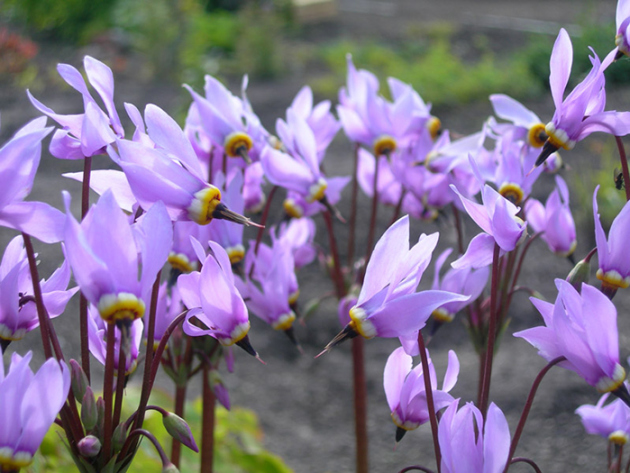
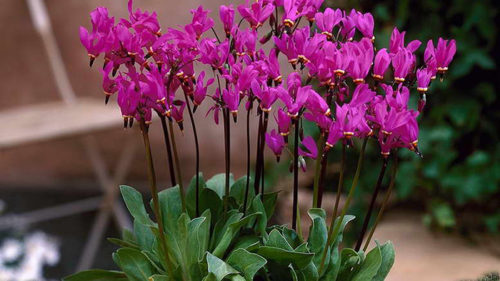
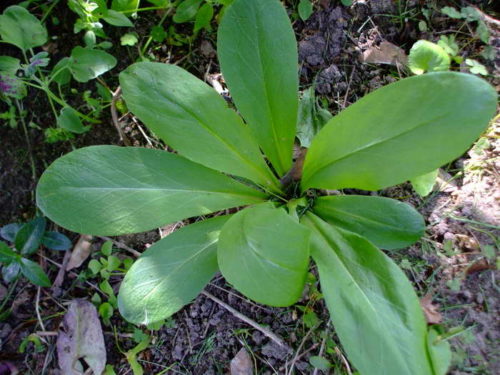

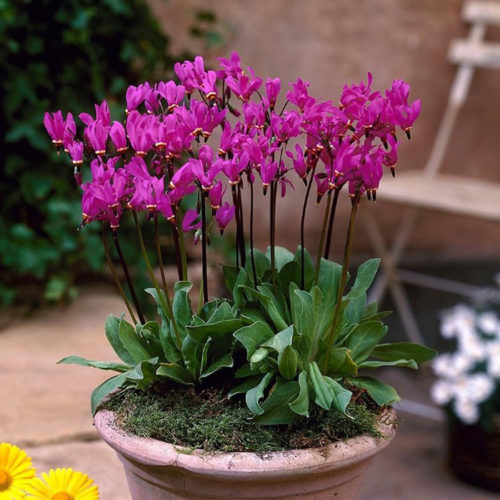
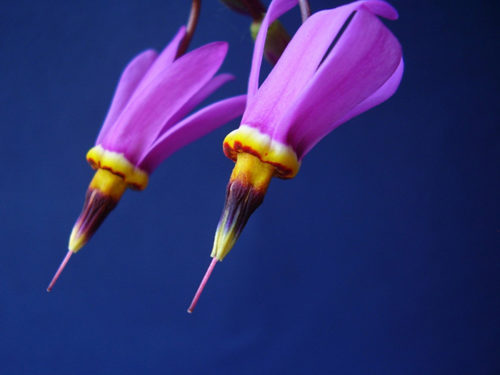
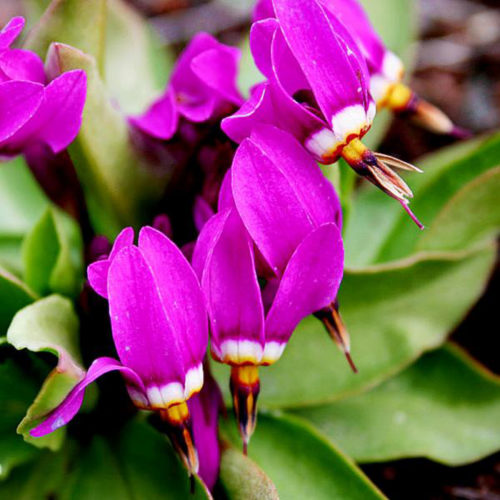
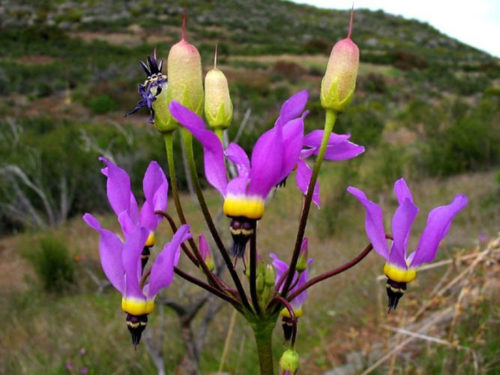
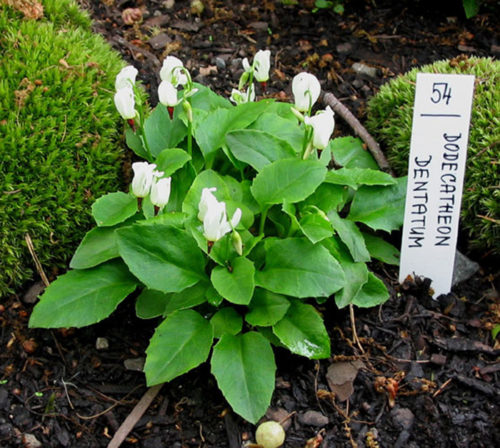
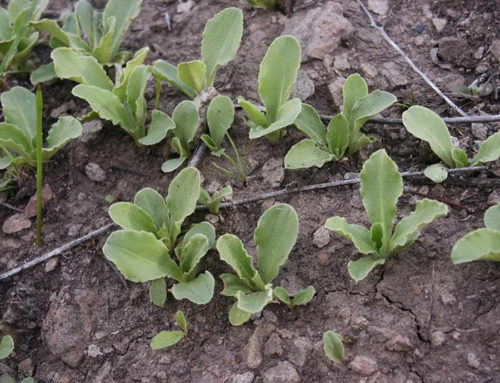
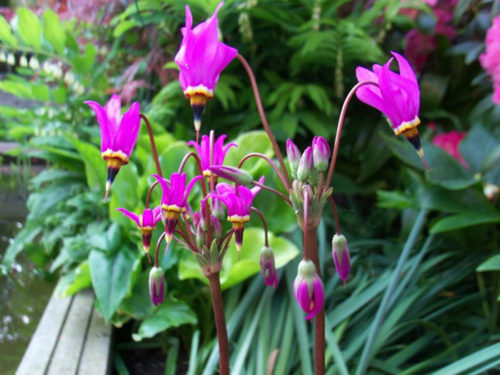
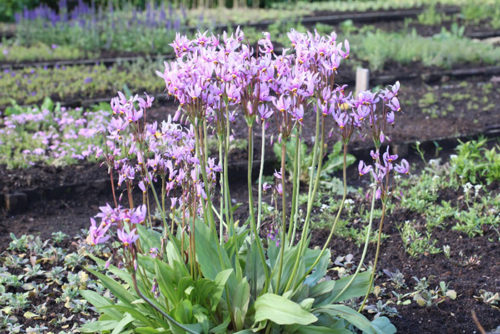
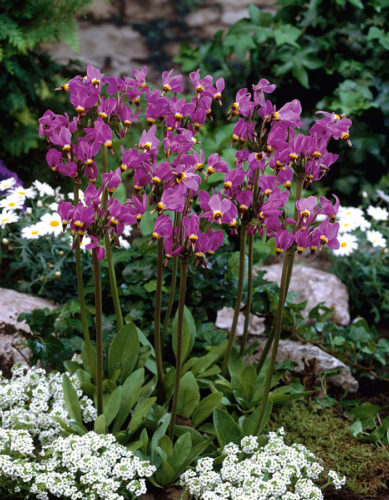

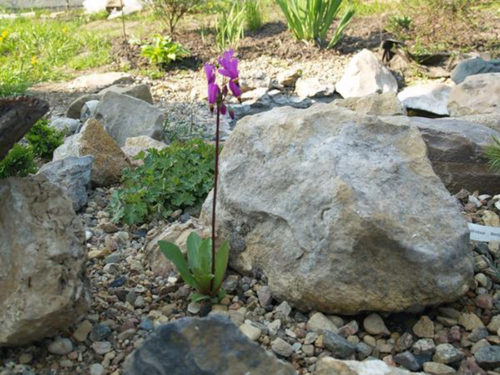
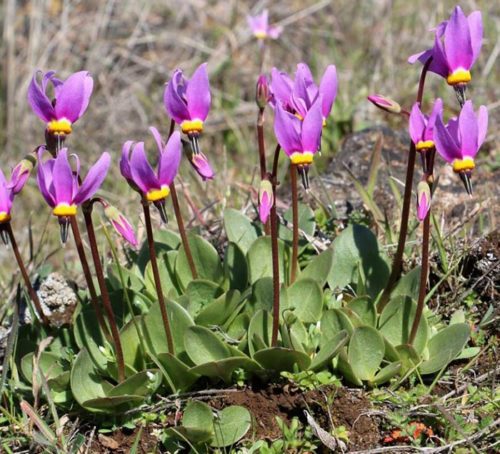
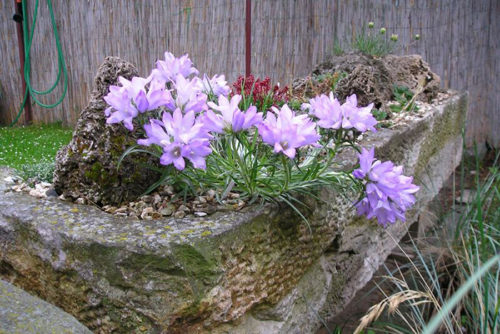












 Start a discussion ...
Start a discussion ...